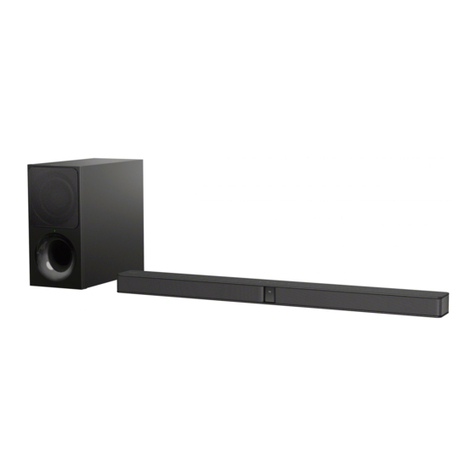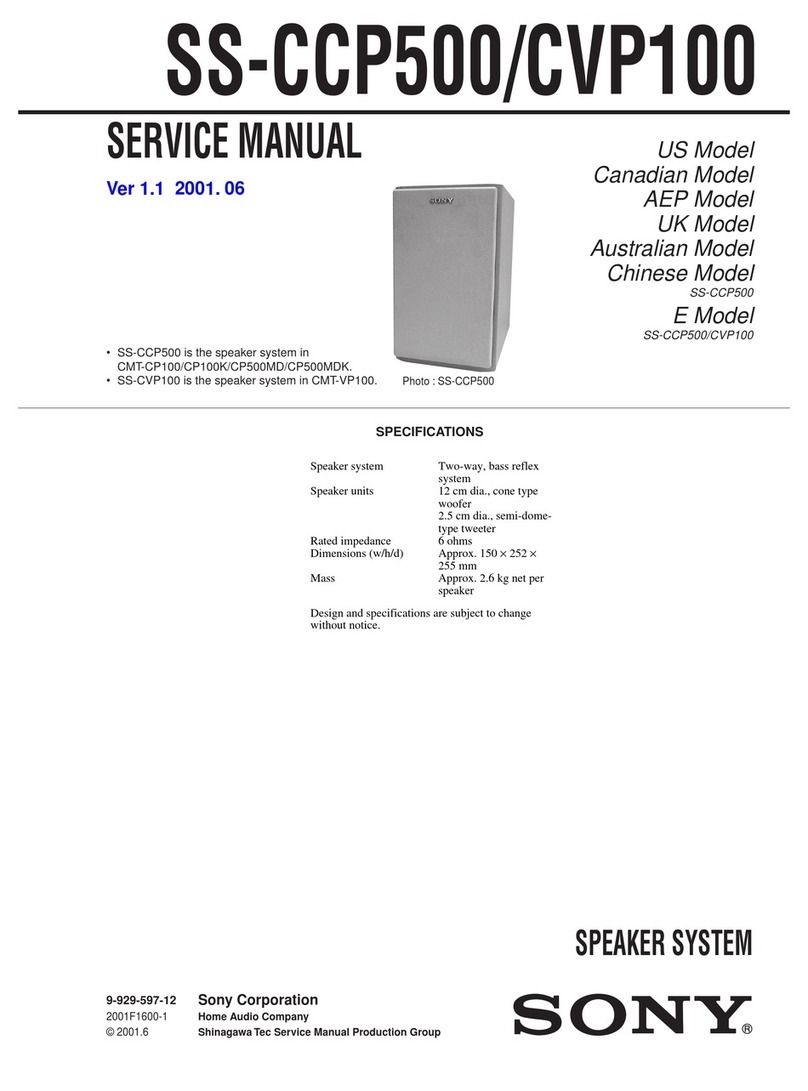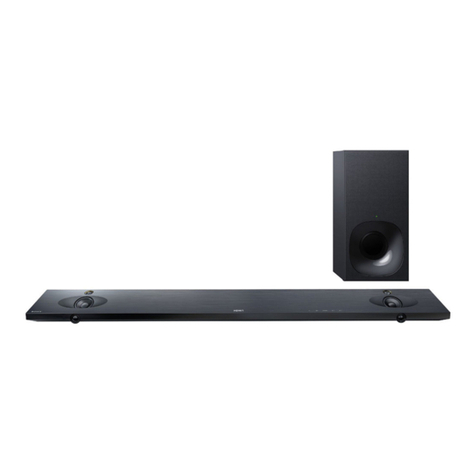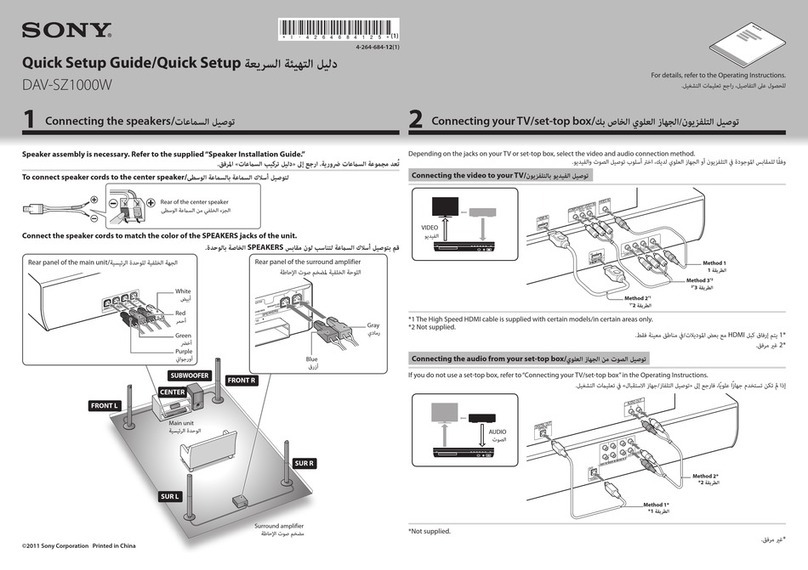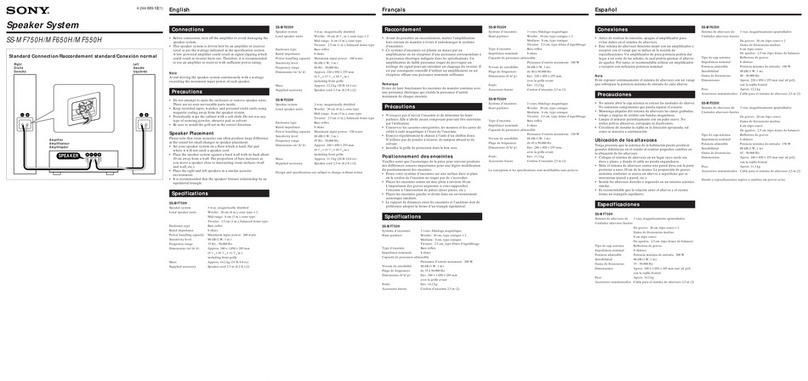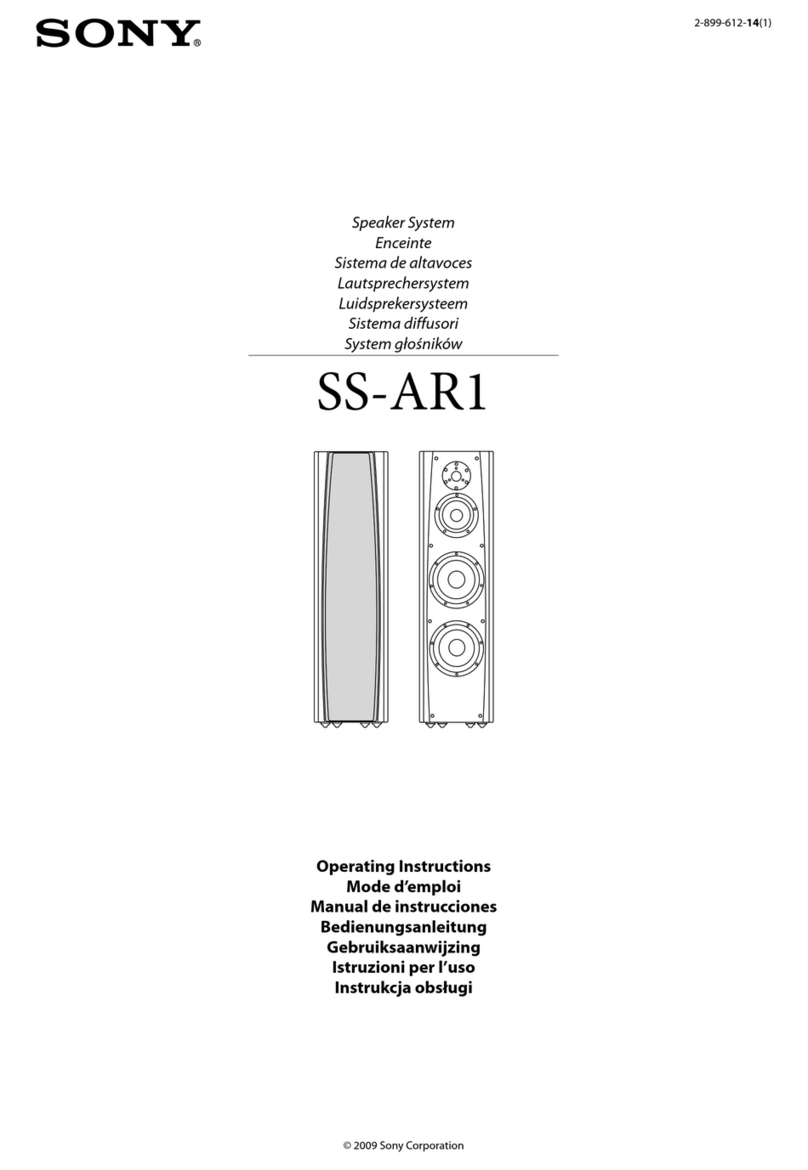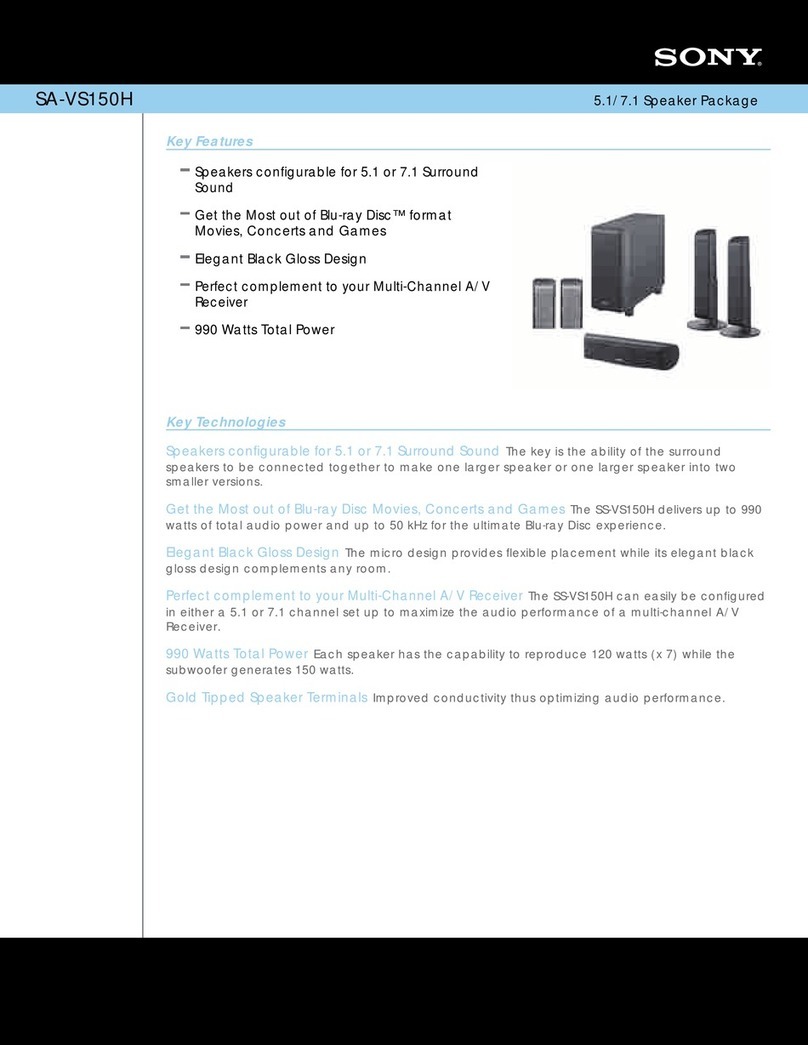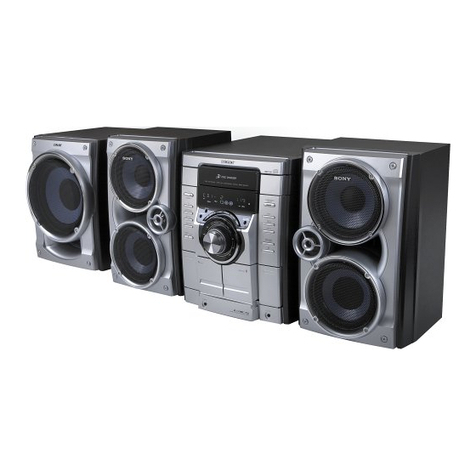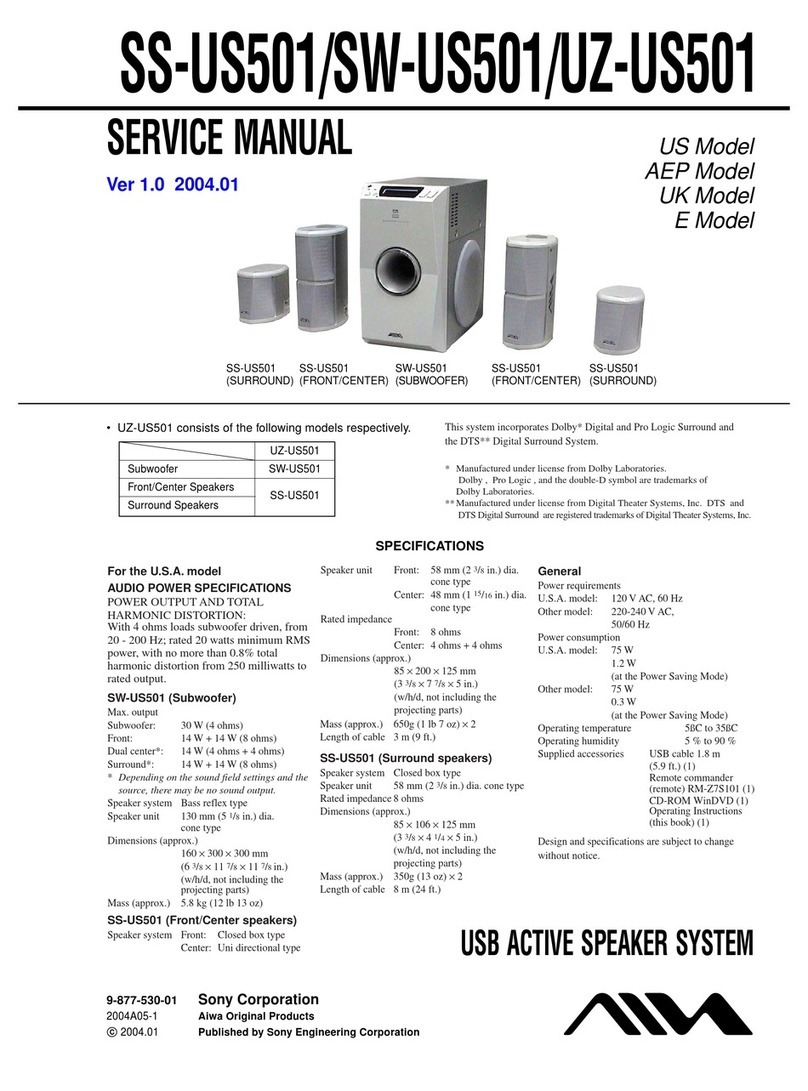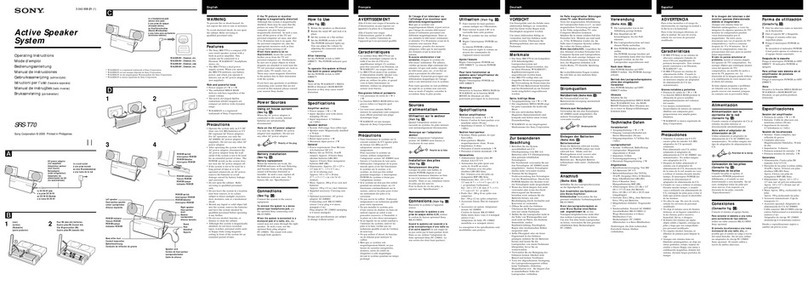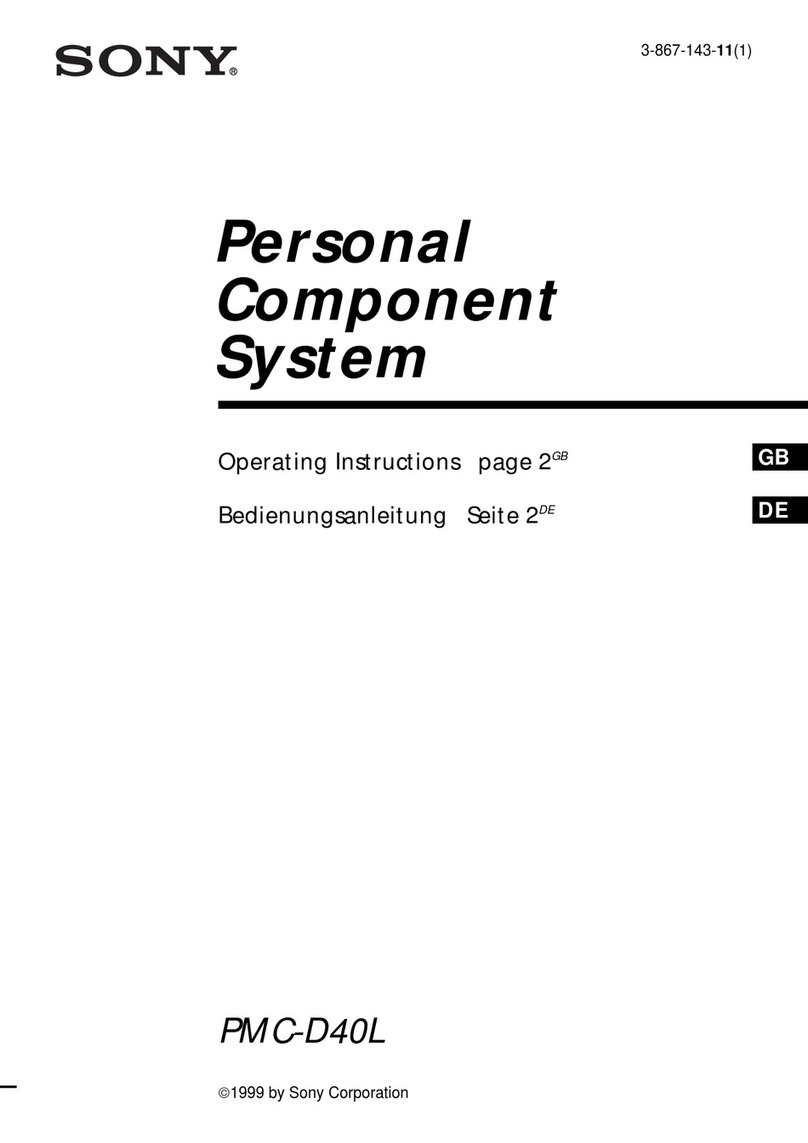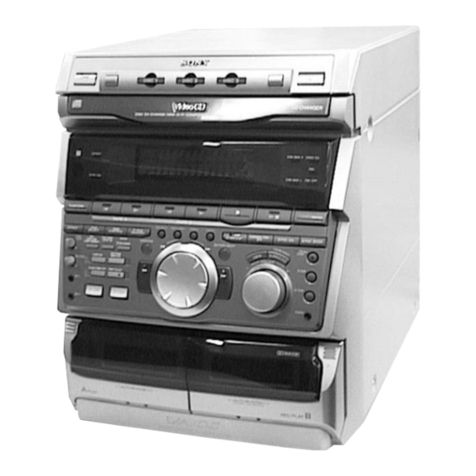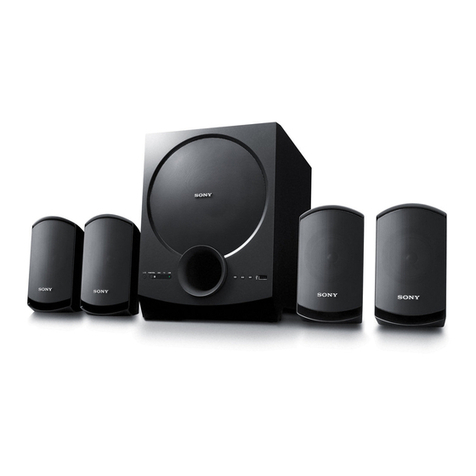SERVICE MANUAL
Sony Corporation
Published by Sony Techno Create Corporation
HT-CT380/CT381
SA-CT380/CT381
SPECIFICATIONS
HT-CT380/CT381
SOUND BAR
SA-CT380/CT381
ACTIVE SPEAKER SYSTEM
9-896-145-02
2015D33-1
© 2015.04
US Model
Canadian Model
E Model
Australian Model
PX Model
HT-CT380/SA-CT380
AEP Model
UK Model
HT-CT380/CT381/SA-CT380/CT381
Ver. 1.1 2015.04
• All of the units included in the HT-
CT380/CT381 (SA-CT380/CT381,
SA-WCT380/WCT381, Remote con-
trol) are required to confirming opera-
tion of SA-CT380/CT381. Check in
advance that you have all of the units.
COMPONENT MODEL NAME
HT-CT380 HT-CT381
Bar Speaker (Active Speaker System) SA-CT380 SA-CT381
Subwoofer (Active Subwoofer) SA-WCT380 SA-WCT381
Amplifier section
U.S. models:
POWER OUTPUT AND TOTAL HARMONIC
DISTORTION:
(FTC)
Front L + Front R:
With 4 ohms loads, both channels
driven, from 200 Hz - 20,000 Hz; rated
35 Watts per channel minimum RMS
power, with no more than 1% total
harmonic distortion from
250 milliwatts to rated output.
POWER OUTPUT (reference)
Front L/Front R: 100 Watts (per
channel at 4 ohms, 1 kHz)
Other models:
POWER OUTPUT (rated)
Front L + Front R:
50 W + 50 W (at 4 ohms, 1 kHz, 1%
THD)
POWER OUTPUT (reference)
Front L/Front R: 100 Watts (per
channel at 4 ohms, 1 kHz)
Inputs
HDMI IN* 1/2/3
ANALOG IN
DIGITAL IN (TV)
Outputs
HDMI OUT (ARC)
HDMI Section
Connector
Type A (19pin)
BLUETOOTH section
Communication system
BLUETOOTH Specification version 3.0
Output
BLUETOOTH Specification Power Class
2
Maximum communication range
Line of sight approx. 10 m (33 ft)1)
Maximum number of devices to be
registered
9 devices
Frequency band
2.4 GHz band (2.4000 GHz -
2.4835 GHz)
Modulation method
FHSS (Freq Hopping Spread Spectrum)
Compatible BLUETOOTH profiles2)
A2DP 1.2 (AdvancedAudio Distribution
Profile)
AVRCP 1.3 (Audio Video Remote
Control Profile)
Supported Codecs3)
SBC4) , AAC5)
Transmission range (A2DP)
20 Hz - 20,000 Hz (Sampling frequency
44.1 kHz)
1) The actual range will vary depending on
factors such as obstacles between
devices, magnetic fields around a
microwave oven, static electricity,
cordless phone, reception sensitivity,
operating system, software application,
etc.
2) BLUETOOTH standard profiles indicate
the purpose of BLUETOOTH
communication between devices.
3) Codec: Audio signal compression and
conversion format
4) Subband Codec
5) Advanced Audio Coding
Front L/Front R speaker section
Speaker system
Full range speaker system,
Acoustic suspension
Speaker
General
Power requirements
120 V AC, 60 Hz (US and Canadian models)
110 V - 240 V AC, 50 Hz/60 Hz (PX model)
220 V - 240 V AC, 50 Hz/60 Hz (Other models)
Power consumption
Dimensions (approx.) (w/h/d)
Mass (approx.)
2.4 kg (5 lb 4 5/8oz)
Supplied accessories
Remote control (1)
R03 (size AAA) batteries (2)
Optical digital cable (1)
Wall mounting brackets (2) and screws (2)
Speaker pads for the subwoofer (4)
Startup Guide (1)
Operating Instructions (1)
Speaker system
Wireless Sound Specification version
2.0
Frequency band
2.4 GHz (2.4000 GHz - 2.4835 GHz)
Modulation method
Pi / 4 DQPSK
Design and specifications are subject to
change without notice.
Wireless transmitter section
* The 1, 2, and 3 jacks are
identical. Using any of them makes no
difference.
900 mm × 51 mm × 117 mm (35 1/2in ×
21
/8in × 4 5/8in) (without wall
mounting brackets)
900 mm × 120 mm × 72 mm (35 1
/2in ×
43/4in × 2 7/8in) (with wall mounting
brackets)
60 mm (2 3/8in) cone type
On: 37 W
Standby: 0.3 W or less
(at the Power saving mode)
Standby: 0.5 W or less
(When [S. THRU] is [ON]: 6 W or less)
• Please refer to service manual separately issued for Subwoofer.
Note:
Be sure to keep your PC used for service and
checking of this unit always updated with the
latest version of your anti-virus software.
In case a virus affected unit was found during
service, contact your Service Headquarters.
Photo: SA-CT380
